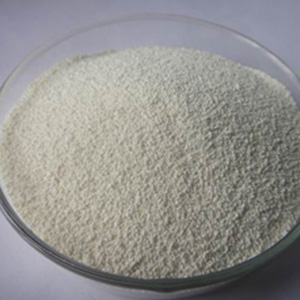
Phytase is a new-style phytase fermented by excellent genetic engineering strain and
produced by advanced post-disposal. . Phytase could release effectively phytic acid of
feedstuff and utilize P of phytic acid sufficiently, which may reduce the addition amount of
Calcium hydrogen phosphate and feed costs accordingly.
1.Specification
Chemical name | Myo-Inositolhexaphosphate phosphohydrolase | Product number | SLXK (2008) 2507 |
Carrier | Starch or Maltodextrin | Origin | E.coli |
Form | Granular, coated,Instant | ||
Activity | 5000-200000U/g(pH5.5, 37℃) | Color | White or yellow |
Dosage | Add 60g-200g in a ton feed | Loss on drying | ≤10% |
Storage | Store 12 months at 5℃ or store 6 months at 25℃ | ||
Caution | Avoid the high temperature, the sunlight perpendicular incidence | ||
Package | 25kg per bag or Drum | ||
2.Function
◆Hydrolyze phytate in feeds, release digestible phosphorus, increase the utilization or phosphorus in feed
◆Reduce the amount of supplemental inorganic P, decrease the feed cost, save space of formula
◆Decrease the excretion of P in excretion and the environmental pollution
◆Improve the availability of nutrients such as minerals and proteins, improve the performance
3.Useage
Animal | Phytase 5000 g(mL)/t | Substiture CaHPO4 (kg/t) |
Laying hens | 60-80 | 8.5-10 |
Broiler | 200 | 5.8-8.5 |
Swine | 120-150 | 5.8-8.5 |
4.Safety
Enzyme preparations belong to protein, which may induce sensitization and cause allergic type reactions
in sensitized individuals. Prolonged contact may cause minor irritation for skin, eyes or mucous membrane
of nose, so any direct contiguity with human body should be avoided. If irritation or allergic response for
skin or eyes develops, consult a doctor.





